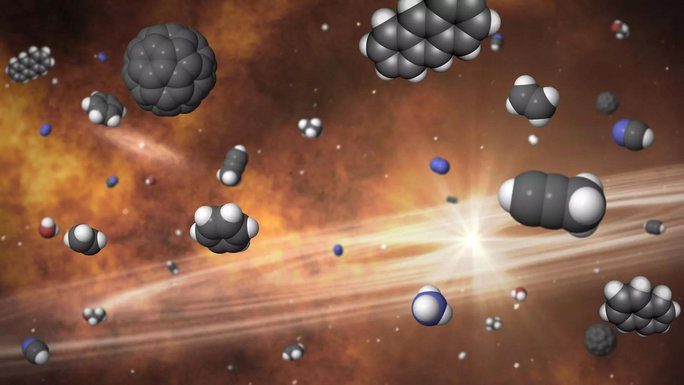The raw materials necessary to initiate a life-sustaining world like Earth have been discovered in the Perseus Molecular Cloud, a young star and gas cluster in deep space.
The Perseus Molecular Cloud, also known as IC348, contains very young stars that are only 2-3 million years old. This discovery was made by a research team led by Dr. Susan Iglesias-Groth from the Instituto Astrofísico de Canarias (IAC) in Spain, through observations using NASA’s Spitzer Space Telescope.

Important molecules essential for life have been found in the Perseus Molecular Cloud, located 1,000 light-years away from Earth – (Photo: IAC).
According to Space, the remarkable spectra collected by Spitzer before its decommissioning from the Perseus Molecular Cloud revealed several incredible components, including the presence of numerous molecules such as hydrogen, hydroxyl, water, carbon dioxide, and ammonia.
These components could play a role in forming more complex hydrocarbons and prebiotic molecules, including hydrogen cyanide (HCN), ethane (C2H6), hexatrine (C6H2), and benzene (C6H6).
Additionally, they discovered several types of colossal carbon molecules known as fullerenes and polycyclic aromatic hydrocarbons.
This complex molecular composition indicates that this cloud contains the essential elements necessary for the young stars it is forming, setting the stage for the possibility of creating a life-sustaining world like Earth.
These molecules will become part of the stars forming in the protoplanetary disk, also suggesting how the building blocks of life first appeared on Earth.
The research team plans to continue observing this intriguing molecular cloud using the James Webb Space Telescope from NASA/ESA/CSA (the American, European, and Canadian space agencies), which promises to reveal more detailed spectra and clarify the chemical composition of the cloud.
This study has recently been published in the scientific journal Monthly Notices of the Royal Astronomical Society.


















































